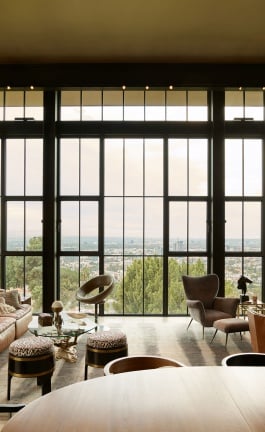Title
Kleureyck: Van Eyck’s Colours in DesignPosted In
Installation, SculptureDuration
13 March 2020 to 21 February 2021Venue
Design Museum GentOpening Hours
Mon, Tue, Thu & Fri 9:30 a.m.–5:30 p.m., Sat & Sun 10 a.m.–6 p.m.Telephone
+32 9 210 10 75| Detailed Information | |||||
|---|---|---|---|---|---|
| Title | Kleureyck: Van Eyck’s Colours in Design | Posted In | Installation, Sculpture | Duration | 13 March 2020 to 21 February 2021 |
| Venue | Design Museum Gent | Opening Hours | Mon, Tue, Thu & Fri 9:30 a.m.–5:30 p.m., Sat & Sun 10 a.m.–6 p.m. | Telephone | +32 9 210 10 75 |
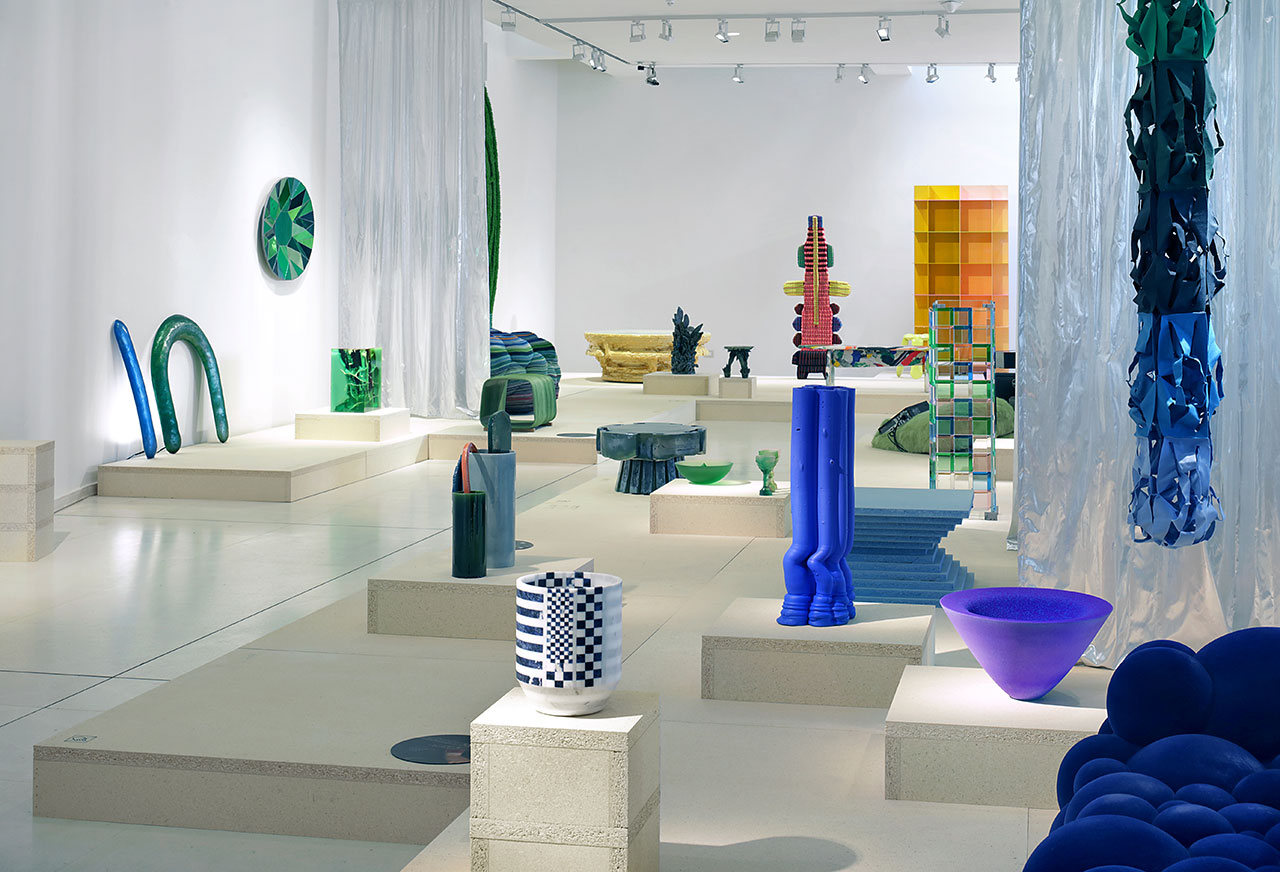
Exhibition view. "Kleureyck. Van Eyck’s Colours in Design" at Design Museum Ghent.
Photo by Filip Dujardin.
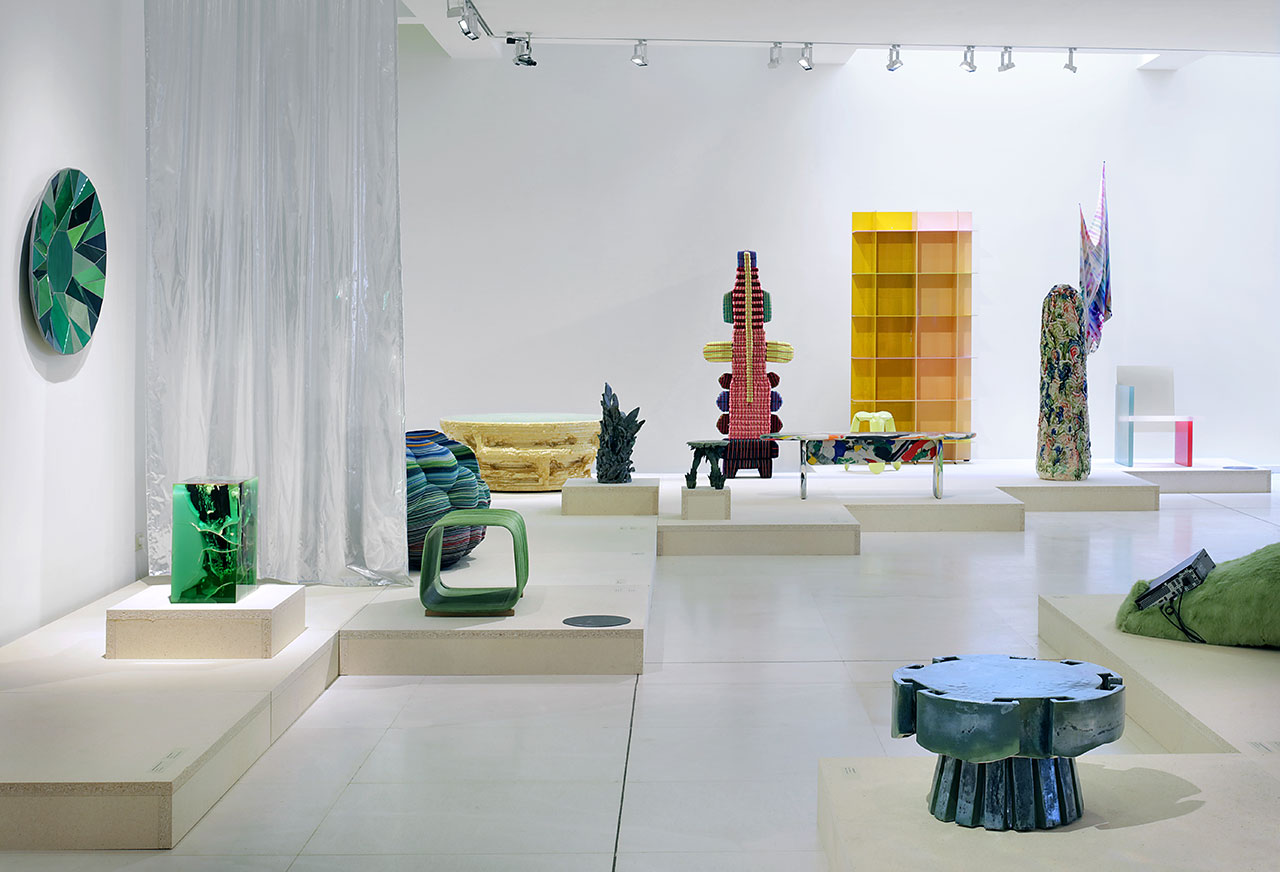
Exhibition view. "Kleureyck. Van Eyck’s Colours in Design" at Design Museum Ghent.
Photo by Filip Dujardin.
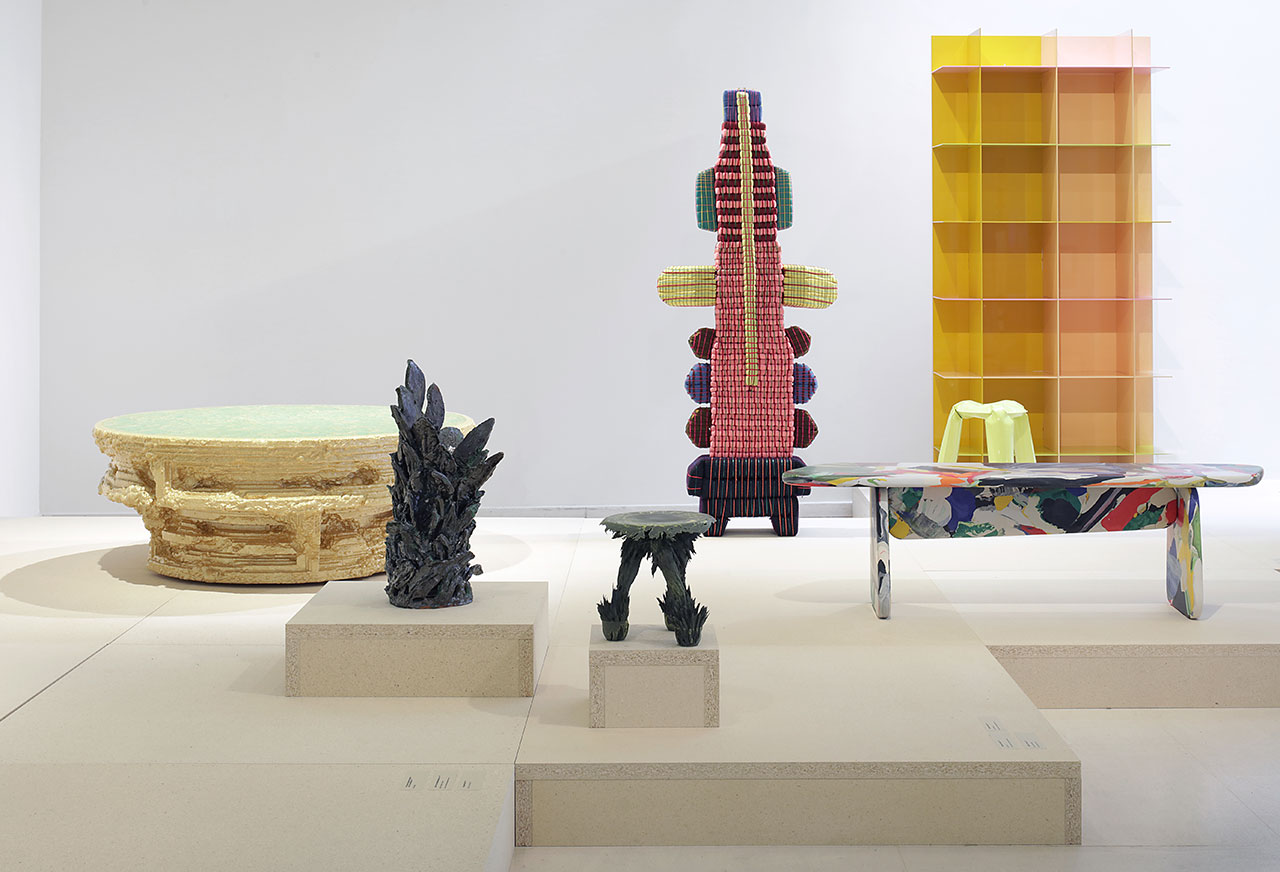
Exhibition view. "Kleureyck. Van Eyck’s Colours in Design" at Design Museum Ghent.
Photo by Filip Dujardin.
Curators Siegrid Demyttenaere and Sofie Lachaert have selected a diverse group of established and emerging international designers working in various design fields, from product and furniture design, to textiles, ceramics and glassware, grouping their work by colour to create a “pigment journey” based on 13 expressive details from the Ghent Altarpiece. In addition, visitors get to explore several research projects that attempt to deceptively answer simple questions such as how to create colour, while 11 experience rooms delve into the effect of colour on our senses inviting visitors to see, hear, taste and feel colour.
Van Eyck was a colour virtuoso, known for his innovative technique which used layers of transparent, coloured glazes in addition to oil paints which gave his paintings an extreme luminosity and colour saturation. His ground-breaking technical skills were a product of his scientific knowledge—he knew everything about light refraction and reflection and was well-versed in physics, chemistry and the theory of perspective—all developed in response to questions that contemporary designers face even today, such as: How do you let the viewer feel what material things are made of? How do you give colours depth? Which pigments do you use for which shades? How do you direct the viewer’s gaze?

Exhibition view. "Kleureyck. Van Eyck’s Colours in Design" at Design Museum Ghent.
Photo by Filip Dujardin.
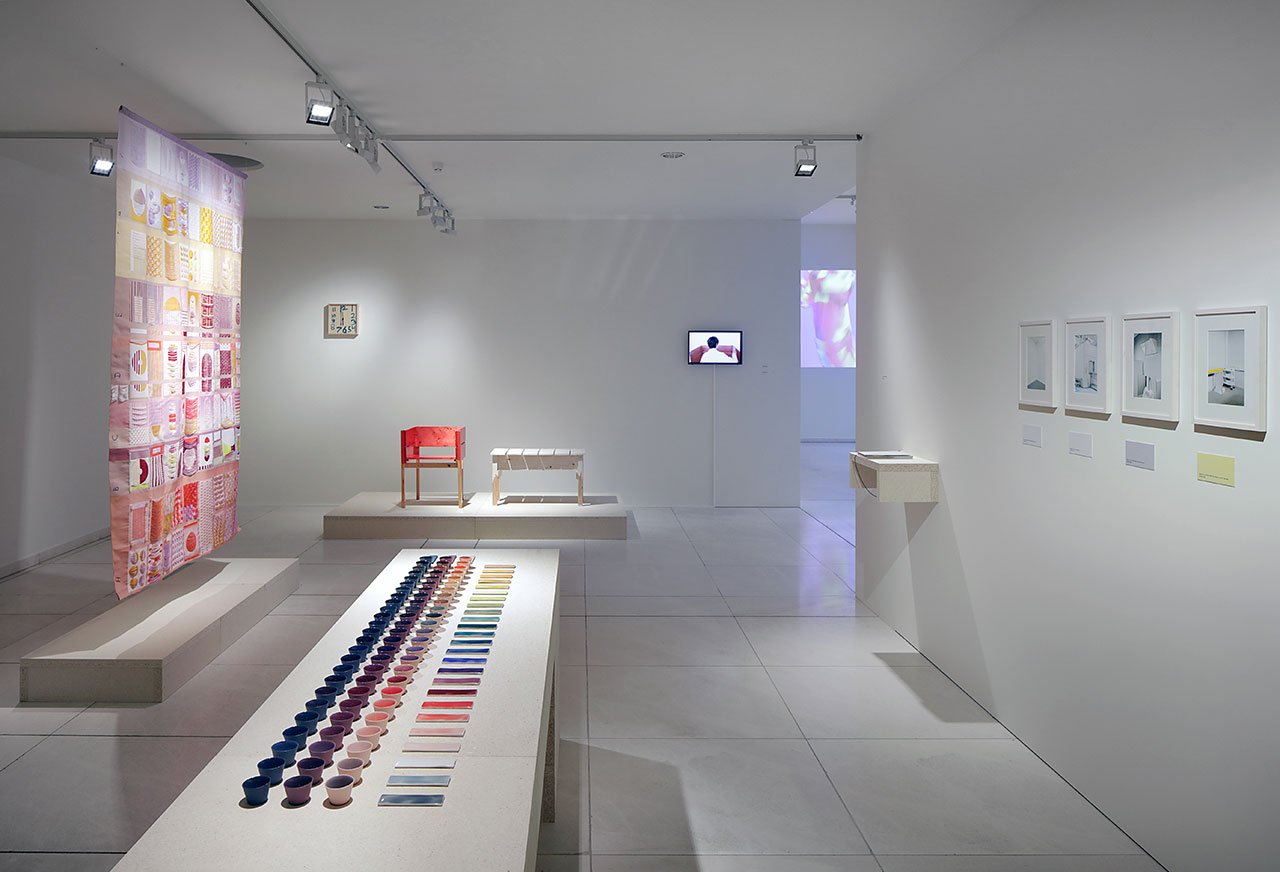
Exhibition view. "Kleureyck. Van Eyck’s Colours in Design" at Design Museum Ghent.
Photo by Filip Dujardin.
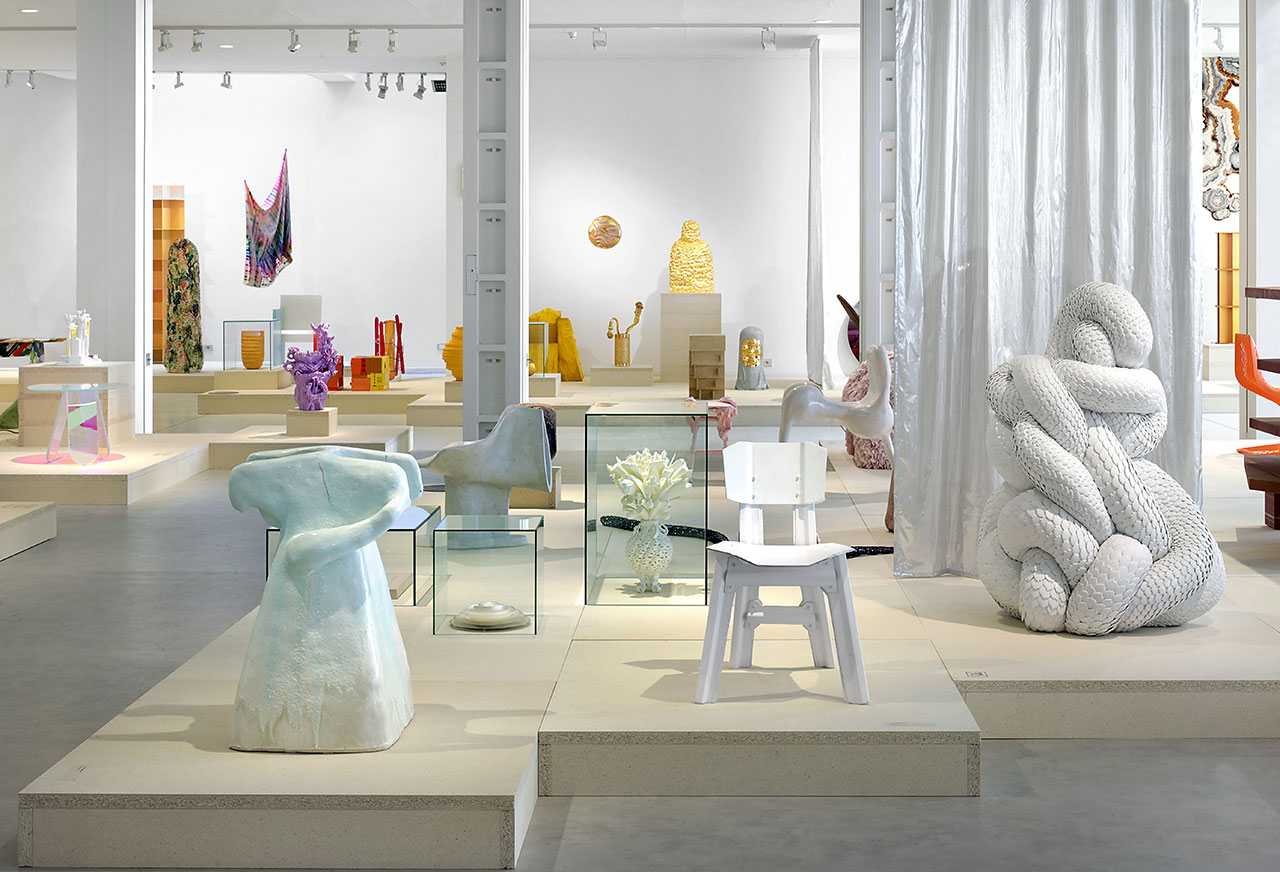
Exhibition view. "Kleureyck. Van Eyck’s Colours in Design" at Design Museum Ghent.
Photo by Filip Dujardin.

Exhibition view. "Kleureyck. Van Eyck’s Colours in Design" at Design Museum Ghent.
Featured: Juliette Clovis, Manis Tetradactyla, 2019. Porcelain on mixed media.
Photo by Filip Dujardin.
Conceived as a walk through Van Eyck’s colour universe, the main part of the exhibition is structured around 13 details from the Adoration of the Mystic Lamb, each one focusing on a particular colour and its relation to light, material, pattern and space—from a black shadow, to Mary’s deep-blue cloak, to the red roofs of medieval Ghent, through to the shiny bronze of a chair, the sumptuous textures of velvet and fur headgear, and the soft wings of the Archangel Gabriel. Each section encompasses a selection of contemporary works that echo, build on or draw from Van Eyck’s particular effect. At the same time, the works intersect with other aspects of the painter’s altarpiece, such as symbolism, craftsmanship, the display of materials, and transparency.
Take for example the realistic depiction of a nude-coloured robe in the lower panel of Van Eyck’s altarpiece, evocatively reflected in the cloth-like undulations of Marie Filippa Janssen’s ceramic work and Ying Chang’s draped objects made out of paper and glue. Meanwhile, the tactility of the same detail is echoed in Andrés Reisinger’s hydrangea flowers-inspired “Hortensia Chair”.

Andrés Reisinger (co-designer Júlia Esqué), Hortensia Chair, 2018-2019.
Photo © Andrés Reisinger & Júlia Esqué

Ying Chang, Malleable State, 2018.
Photo © Ying Chang
While designers like Janssen, Chang and Reisinger focus on the materiality of colour, others explore the effect of colour on perception. The multi-coloured finish of Patricia Urquiola’s “Shimmer” glass coffee table takes advantage of light refraction paying tribute to Van Eyck’s halo-like aureole that frames the dove-figured Holy Spirit in the central panel of the Adoration of the Mystic Lamb. Similar effects can also be been in the colour gradients of Germans Ermičs’ “Low Horizon Screen” and Dawn Bendick’s dichroic glass sculptures which shift from warm orange or pink to dramatic neon green and blue.
Consisting of different layers of glass with a colour foil in between, Sabine Marcelis and Brit van Nerven’s aubergine-hued “Seeing Glass - Big Round Mirror” mirrors Van Eyck’s experimentation with lighting, reflection and the rendering of colour as showcased in the shimmering armour of a knight on horseback in the bottom panel of the altarpiece. On the other hand, Van Eyck’s use of black pigment is picked up by Marcin Rusak who drenched leftover flowers in black resin to create unique slabs which he has assembled into sculptural objects, and Wieki Somers whose black glazed vases are adorned with silver-coloured flowers and leaves that have been burnt during firing.

Marcin Rusak Studio, PERMA 01, 2018 © Marcin Rusak Studio.
Photo by Marcin Rusak Studio.
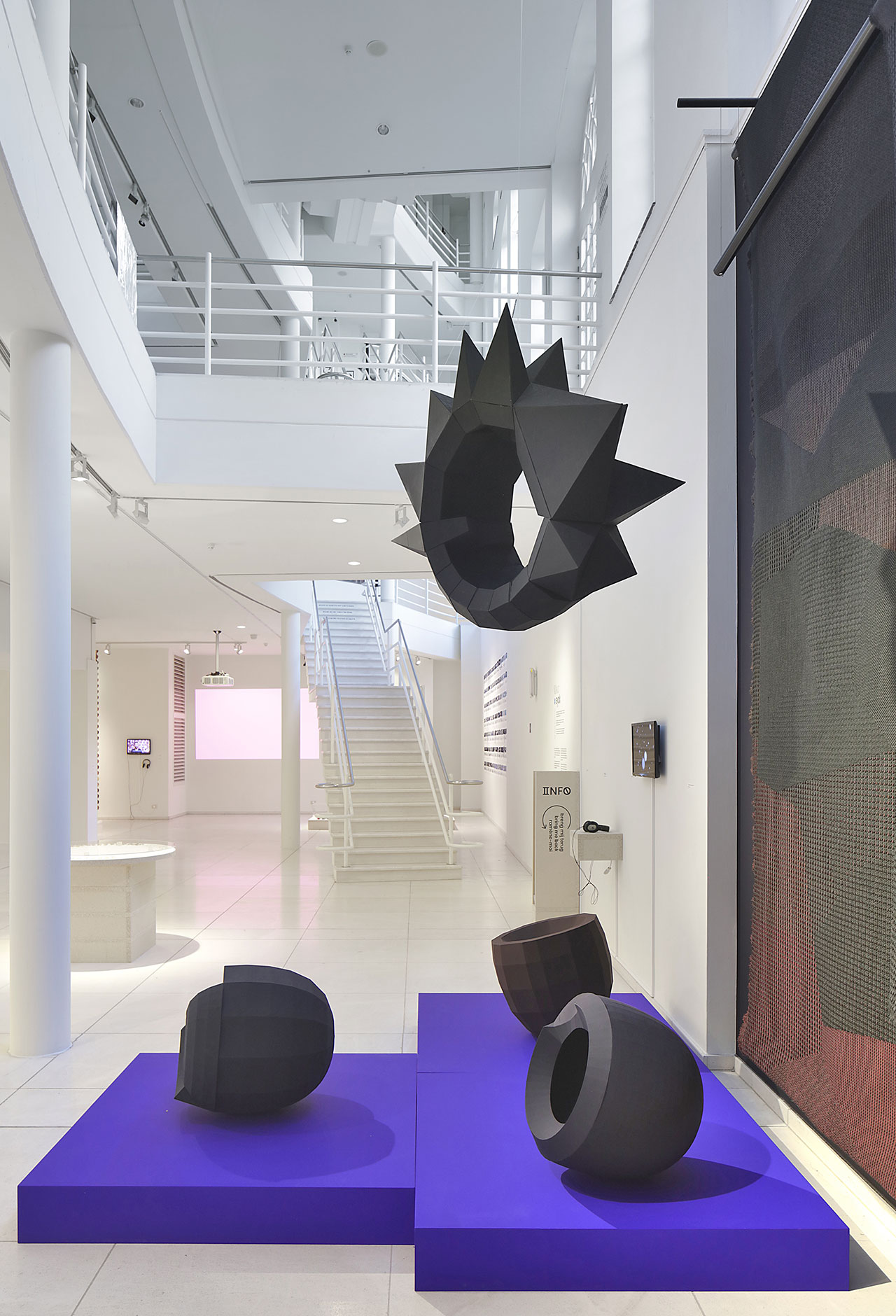
Exhibition view. "Kleureyck. Van Eyck’s Colours in Design" at Design Museum Ghent.
Featured: Hella Jongerius, Colourful Black Installation, 2017-2020.
Photo by Filip Dujardin.
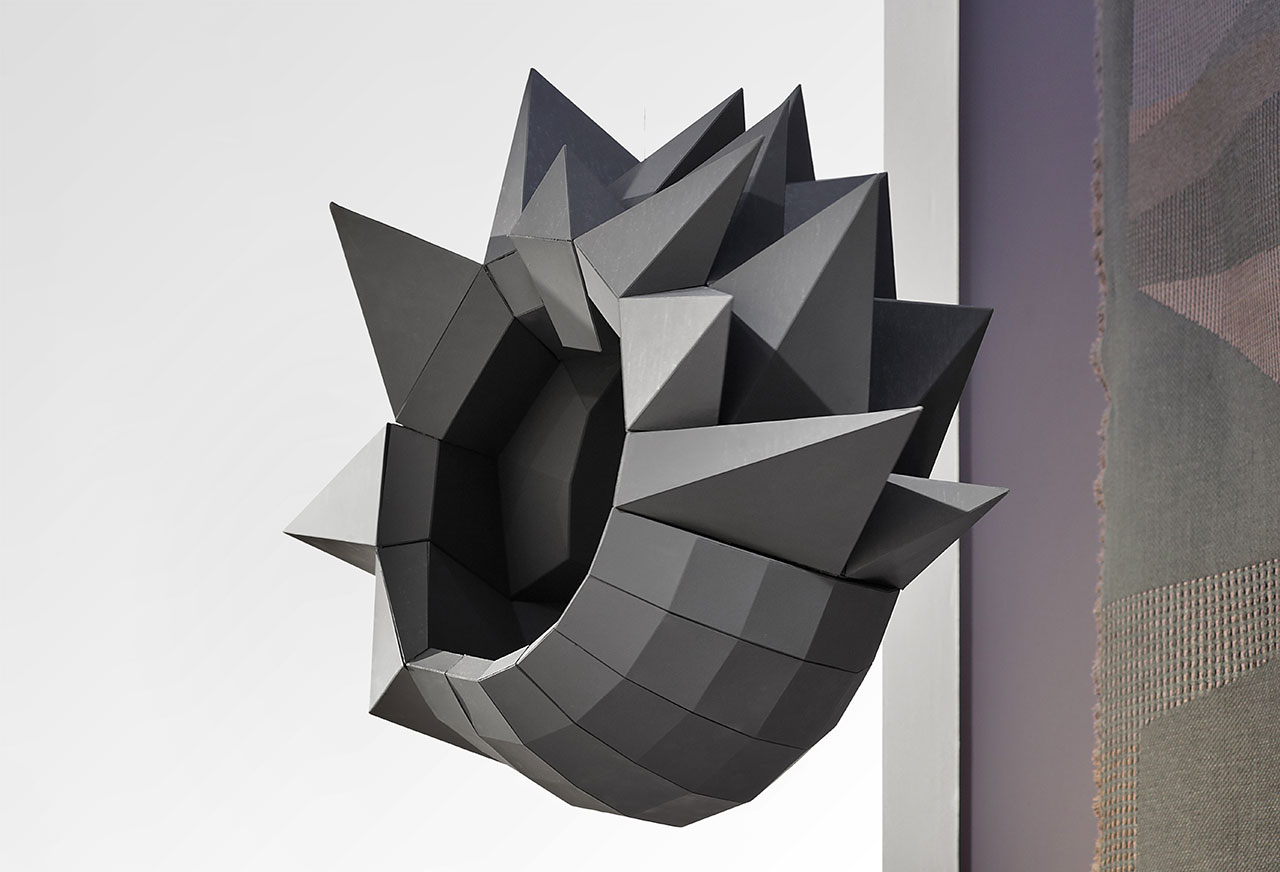
Exhibition view. "Kleureyck. Van Eyck’s Colours in Design" at Design Museum Ghent.
Featured: Hella Jongerius, Colourful Black Installation, 2017-2020.
Photo by Filip Dujardin.
The exhibition also includes 11 experience rooms at Hotel de Coninck, the Museum’s 18th century building, where 11 designers were commissioned to present new works based on the Adoration of the Mystic Lamb that explore the relation between colour and the senses.
In Nick Verstand’s “ANIMA III” installation, visitors are transfixed by a large luminescent sphere whose hypnotic fluidity is enhanced by an immersive soundtrack by Salvador Breed. Achieved by the use of a single projector coupled with a hemispherical lens, the flowing colours and light patterns seems to emanate from inside the orb, referencing Van Eyck’s painting technique of building up multiple layers of oil paint to give depth to his colours. With light and sound responding to the position of visitors in the space, the installation also explores the emotional relationship between humans and artificially intelligent machines, in an attempt to demonstrate that an object can feel, or even possess a soul.
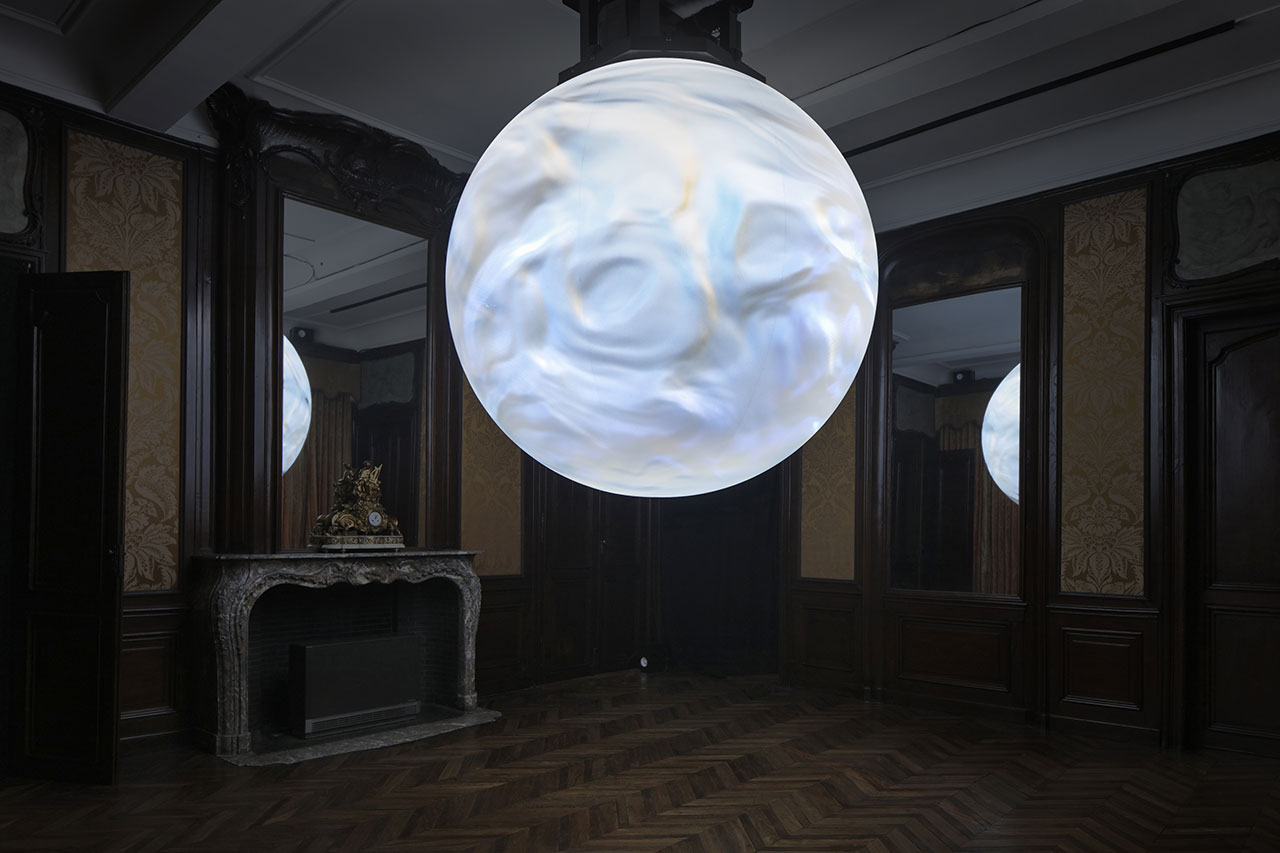
Exhibition view. "Kleureyck. Van Eyck’s Colours in Design" at Design Museum Ghent.
Featured: Nick Verstand, Anima III, 2020.
Photo by Filip Dujardin.
ANIMA conceived and designed by Nick Verstand in collaboration with Salvador Breed (sound composition), onformative (software & design) and Pufferfish (spherical projection).
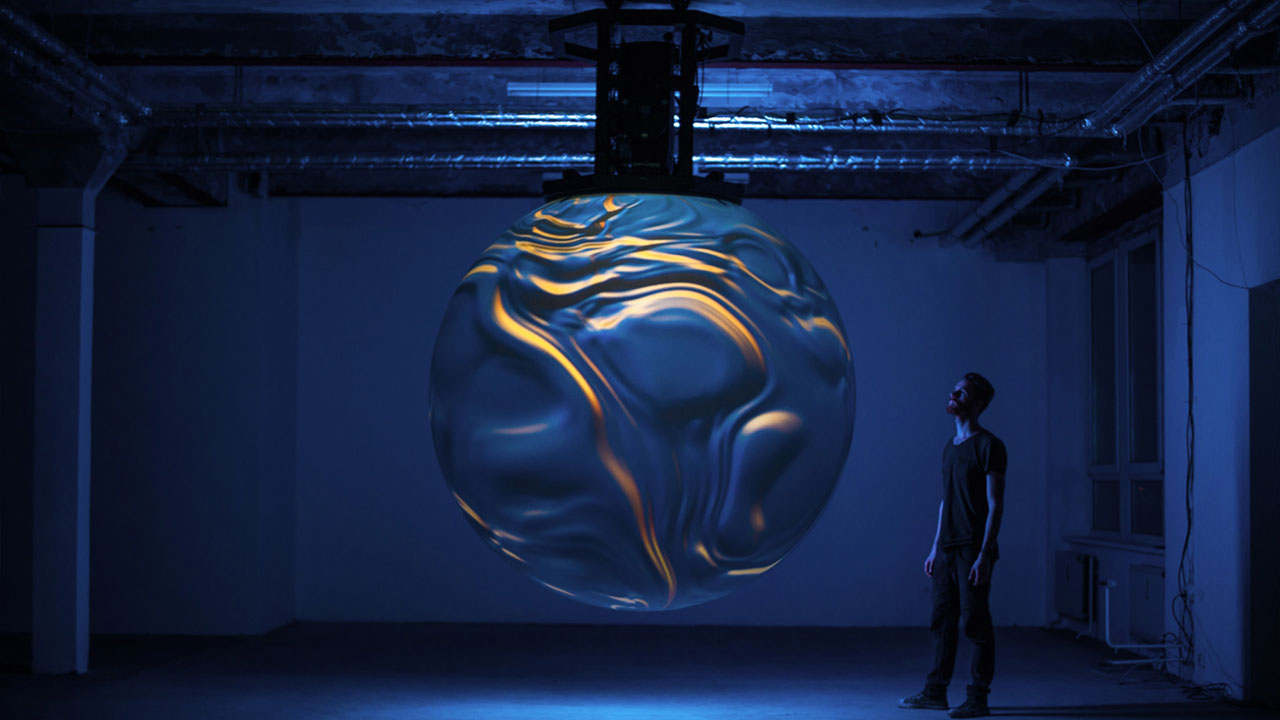
Anima III, 2020. Conceived and designed by Nick Verstand in collaboration with Salvador Breed (sound composition), onformative (software & design) and Pufferfish (spherical projection).
Photography by Noortje Knulst.

Exhibition view. "Kleureyck. Van Eyck’s Colours in Design" at Design Museum Ghent.
Featured: Studio Plastique, Vitrum, 2020. Installation. Created for Kleureyck in partnership with Schloss Hollenegg for Design, WonderGlass.
Photo by Filip Dujardin.

Exhibition view. "Kleureyck. Van Eyck’s Colours in Design" at Design Museum Ghent.
Featured: Studio Plastique, Vitrum, 2020. Installation. Created for Kleureyck in partnership with Schloss Hollenegg for Design,
WonderGlass.
Photo by Filip Dujardin.
Inspired by the history of the colour blue, Studio Plastique’s installation “Vitrum” installation consists of multiple glass panes, each representing a historically important shade of blue.
The wallpaper installation from Studio RENS named “Changing Perception / ONLINE” explores how we perceive the colours of artworks on the internet by showcasing all the images you get when you google Van Eyck’s “Portrait of a man in a red turban”, while “Changing Perception / OBJECT” by the same team proves that colours only exist in our head by using light to change the colour of Martin Visser’s iconic chair arranged in a colourful array.
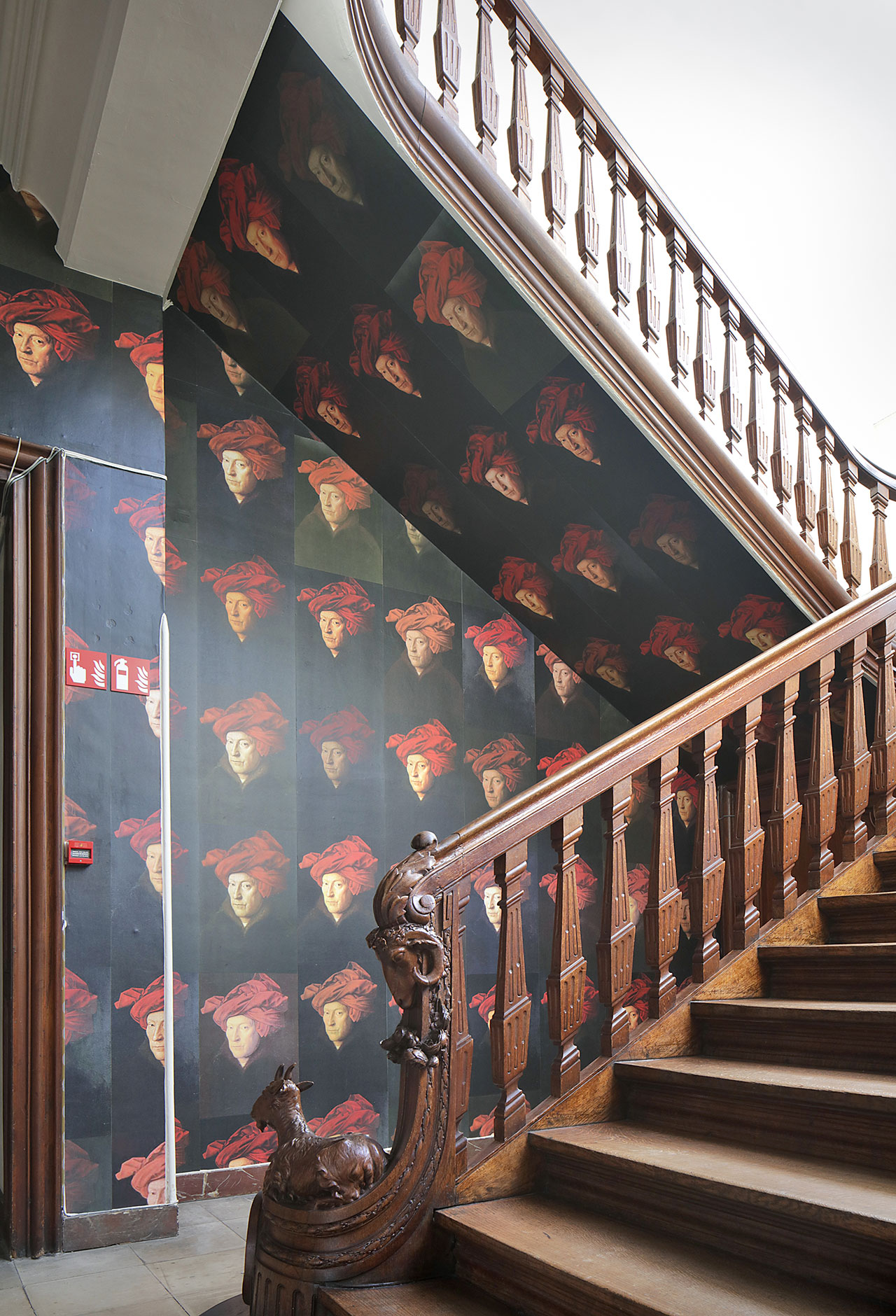
Exhibition view. "Kleureyck. Van Eyck’s Colours in Design" at Design Museum Ghent.
Featured: Studio RENS, Changing Perception / ONLINE, 2020. Wallpaper installation. Created for Kleureyck in collaboration with NLXL.
Photo by Filip Dujardin.

Exhibition view. "Kleureyck. Van Eyck’s Colours in Design" at Design Museum Ghent.
Featured (foregound): Studio RENS, Changing Perception / ONLINE, 2020.
Featured (interior of room): Joanna Reuse, C S D H L A O P U E R , 2020.
Photo by Filip Dujardin.

Exhibition view. "Kleureyck. Van Eyck’s Colours in Design" at Design Museum Ghent.
Featured: Joanna Reuse, C S D H L A O P U E R , 2020. Installation for children. Created for Kleureyck in collaboration with Vrijdaghs, Ateljee Recycling Shop.
Photo by Filip Dujardin.

Exhibition view. "Kleureyck. Van Eyck’s Colours in Design" at Design Museum Ghent.
Featured: Studio RENS, Changing Perception / OBJECTS, 2020. Installation. Created for Kleureyck in collaboration with Light & Lighting Laboratory KU Leuven, Kvadrat, Spectrum.
Photo by Filip Dujardin.
Inspired by the abundance of flowers in the central panel of Van Eyck’s Adoration of the Mystic Lamb, Ghent-based artistic duo Les Monseigneurs, in collaboration with textile manufacturer Verilin, designed “Un Jardin Miraculeux”, a series of tapestries based on flowers they collected, dried and scanned. The digital images that this process produced were then translated into textile patterns which they used as a backdrop for large daffodils, a reference to the wild narcissus in Van Eyck’s work.
In Marianne Cauvard and Raphaël Pluvinage’s “Noisy Jelly” installation, visitors get to touch a series of colourful gelatine shapes inspired by the geometric patterns and colour palette of Van Eyck’s altarpiece, with each one producing a unique sound when you press it, while in “The Color Biolab” by Laboratory (an experimental lab for art/design and biotechnology at KASK / School of Arts Ghent) they get to see the creation of new pigments from unconventional sources such as such as microalgae and bacteria.
Incredibly diverse and distinctive as they are, the works on display at Design Museum Ghent all share a deep affinity for colour and its creative potential, linking the past with the present by tackling fundamental questions such as how to create colour and what is the impact of colour that artists and designers have had to confront for millennia.
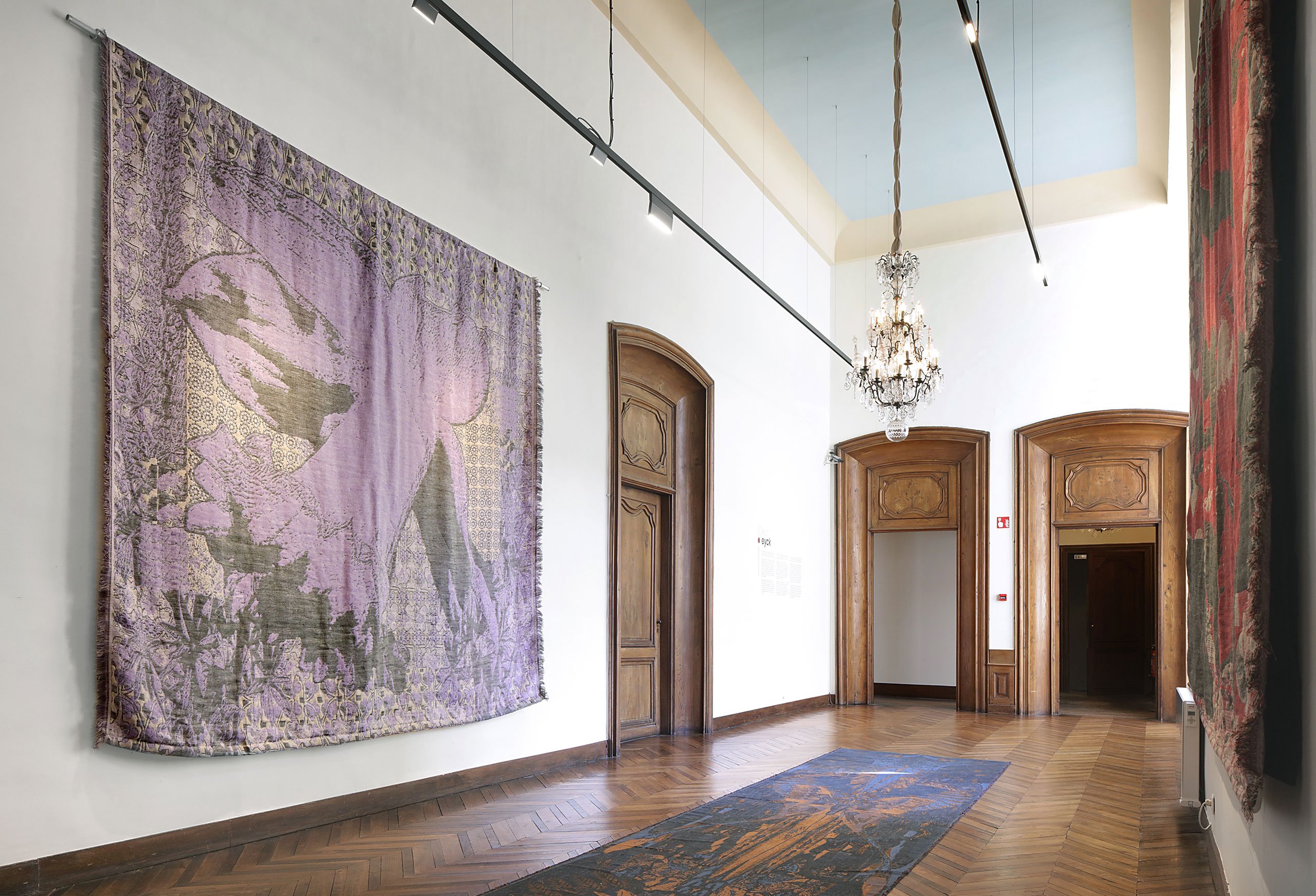
Exhibition view. "Kleureyck. Van Eyck’s Colours in Design" at Design Museum Ghent.
Featured: Les Monseigneurs, Un Jardin Miraculeux, 2020. Installation. Created for Kleureyck in partnership with Verilin.
Photo by Filip Dujardin.

Exhibition view. "Kleureyck. Van Eyck’s Colours in Design" at Design Museum Ghent.
Featured: Marente van der Valk (Food Lab – Jan van Eyck Academy), The Forager, Céline Pelcé, Re-table(au), 2020. Installation and activations. Created for Kleureyck.
Photo by Filip Dujardin.

Exhibition view. "Kleureyck. Van Eyck’s Colours in Design" at Design Museum Ghent.
Featured: Marianne Cauvard & Raphaël Pluvinage, Noisy Jelly, 2012. Adapted version for Kleureyck, 2020. Installation with sound. Sound and programming: Léo Baqué. Partner: Madd-Bordeaux.
Photo by Filip Dujardin.

Exhibition view. "Kleureyck. Van Eyck’s Colours in Design" at Design Museum Ghent.
Featured: mischer’traxler, Colourful Kinaesthesia, 2020. Installation. Created for Kleureyck, based on a workshop in Domaine de Boisbuchet in 2019. Exhibited projects from workshop participants. Photographs: Martina Orska. Film: Holo Wang. Partner: Domaine de Boisbuchet.
Photo by Filip Dujardin.
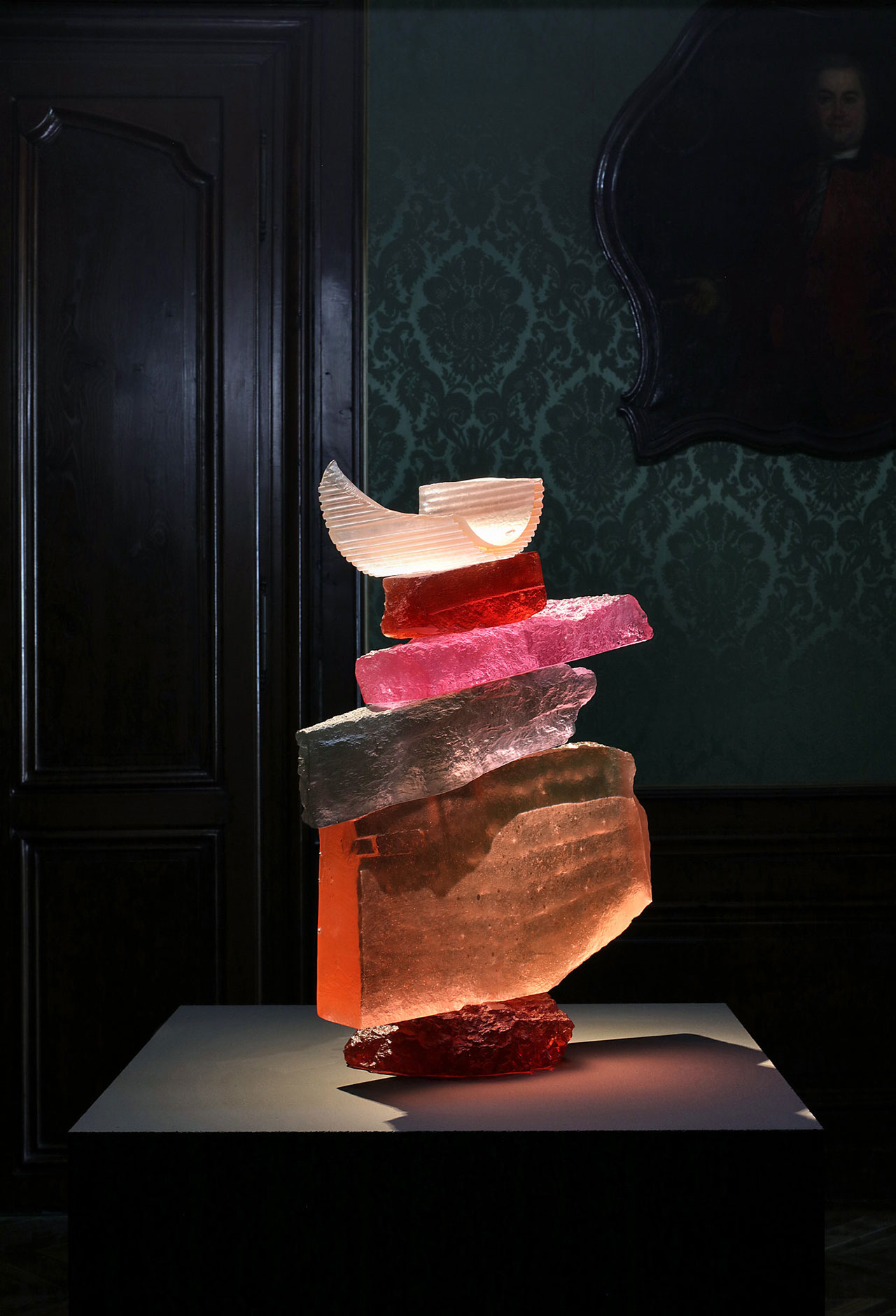
Exhibition view. "Kleureyck. Van Eyck’s Colours in Design" at Design Museum Ghent.
Featured: Dawn Bendick, Time Rock Stack, 2019-2020.
Photo by Filip Dujardin.





